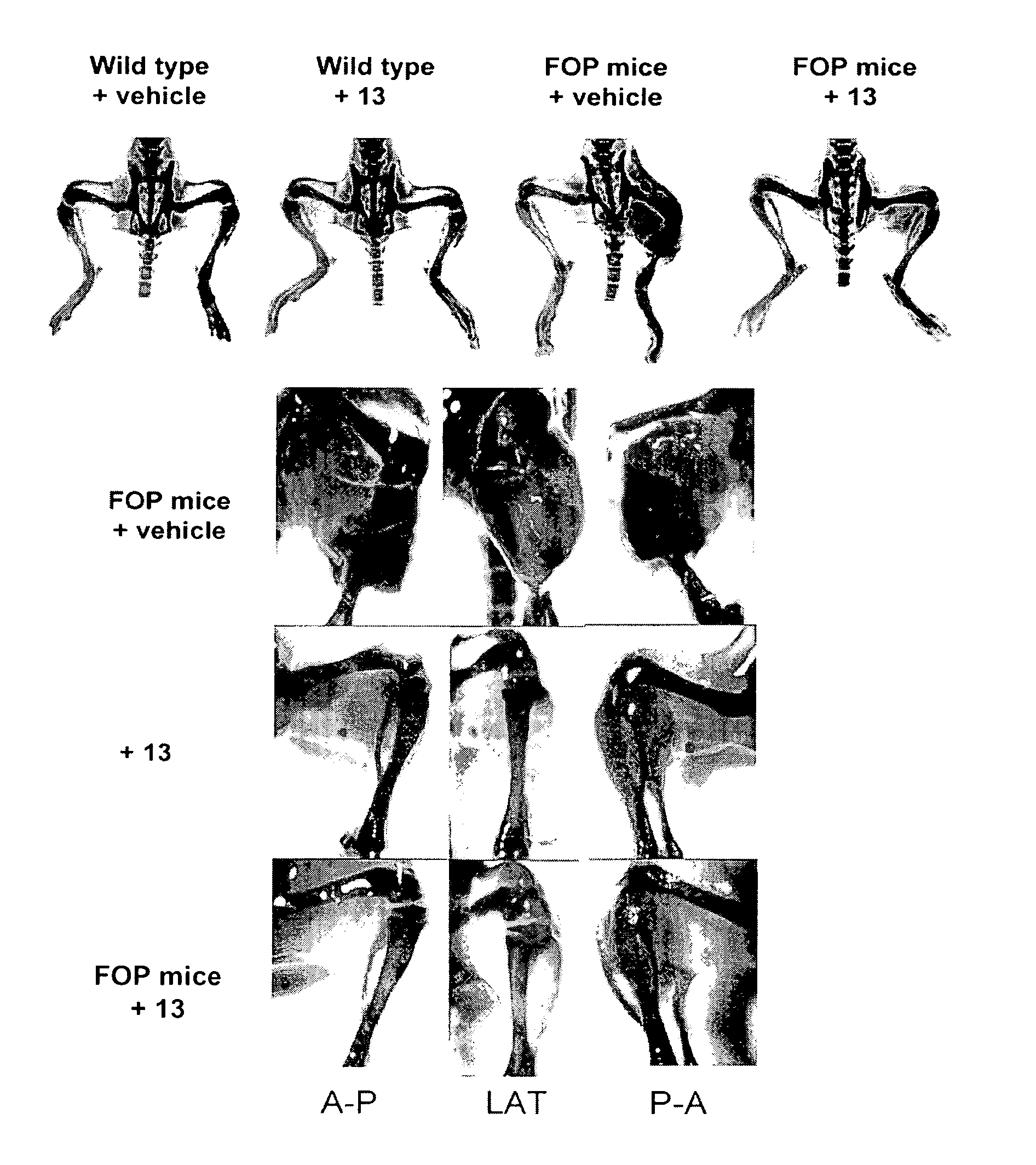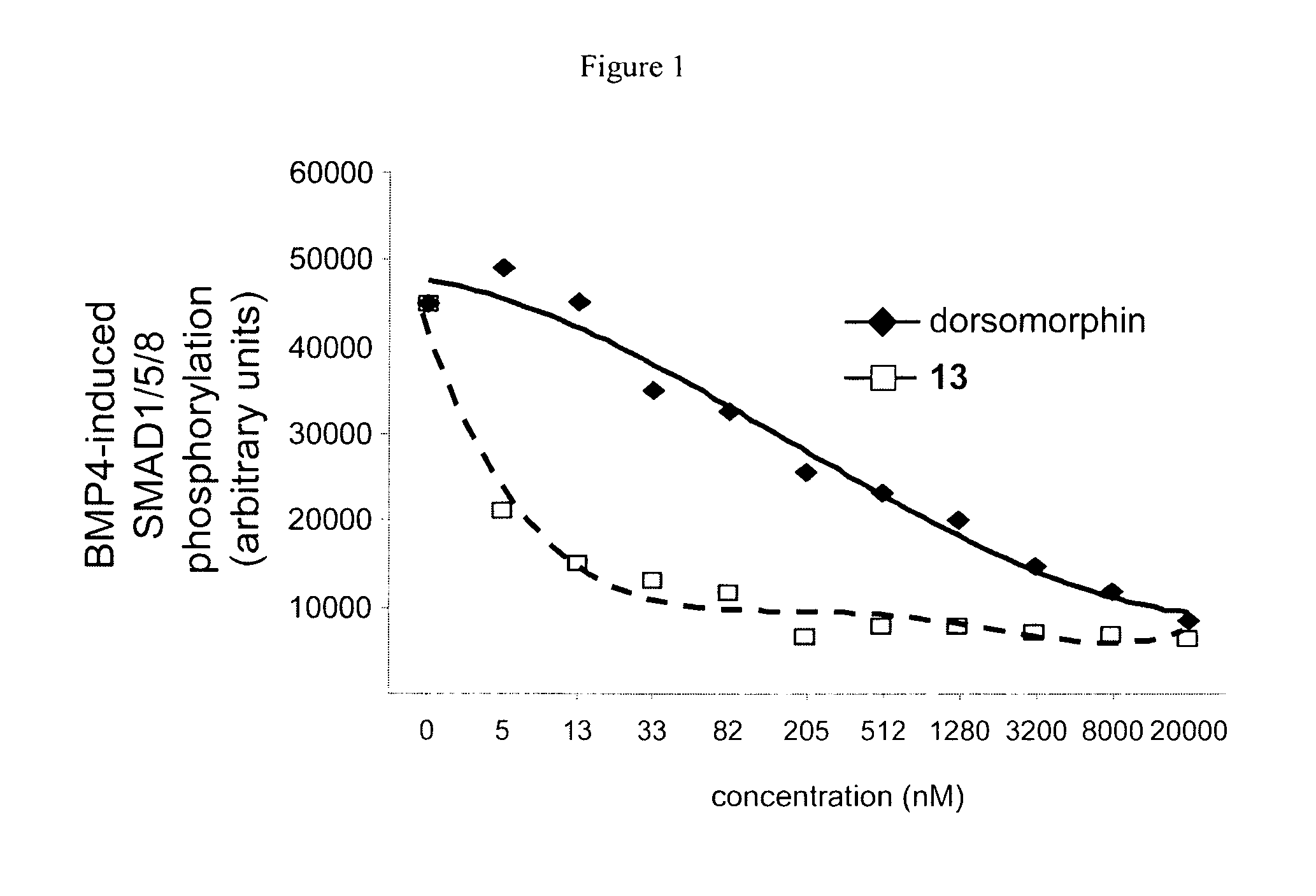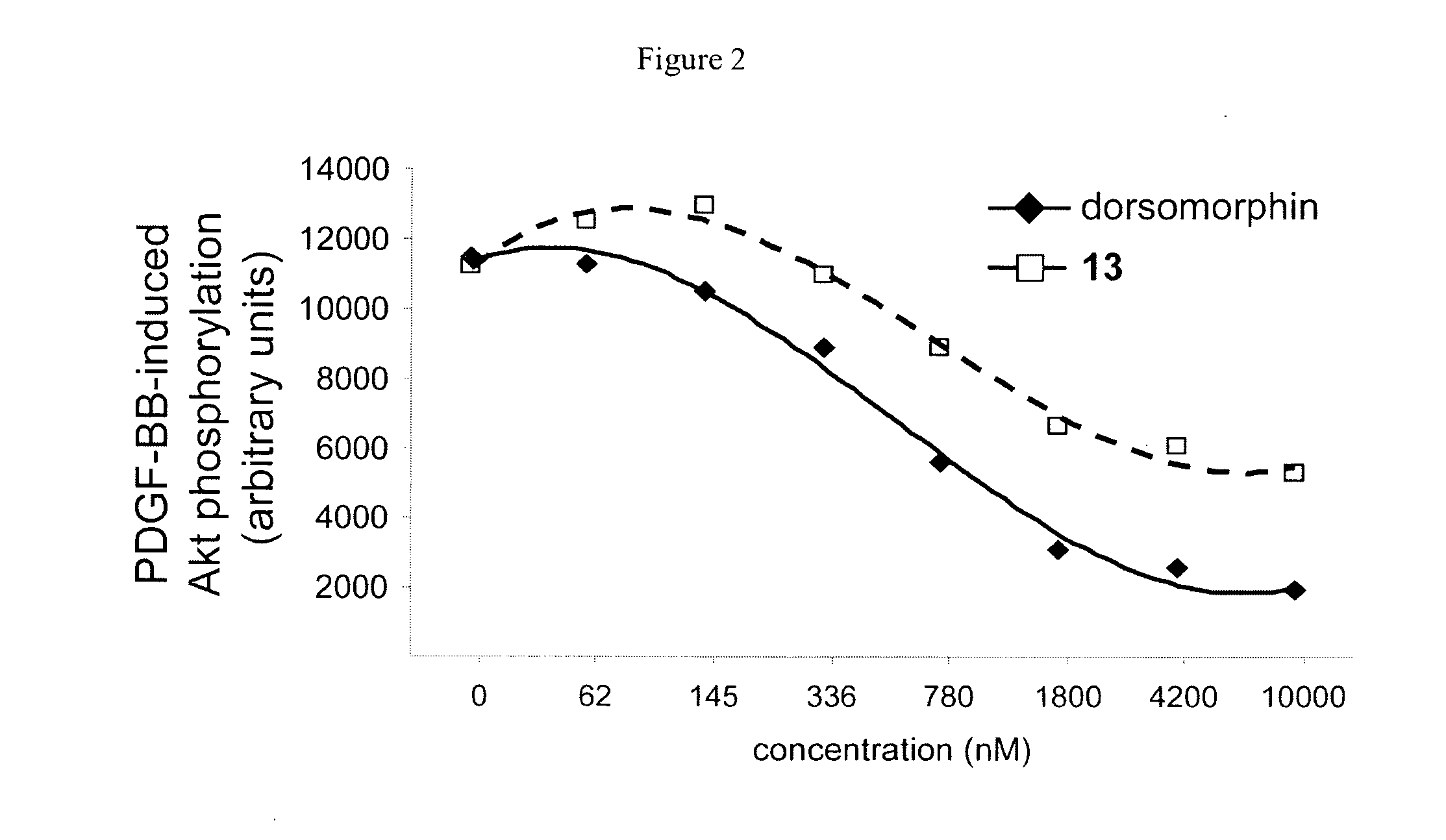Inhibitors of the bmp signaling pathway
a signaling pathway and inhibitor technology, applied in the direction of antibacterial agents, drug compositions, extracellular fluid disorders, etc., can solve the problems of ineffective and practical approaches to inhibiting bmp signals via soluble receptors, endogenous inhibitors, or neutralizing antibodies, and endogenous inhibitors such as noggin and follistatin have limited specificity for ligand subclasses,
- Summary
- Abstract
- Description
- Claims
- Application Information
AI Technical Summary
Benefits of technology
Problems solved by technology
Method used
Image
Examples
example 1
Preparation of Substituted Pyrazolo[1,5-a]Pyrimidine Derivatives
[0269]The synthesis of substituted pyrazolo[1,5-a]pyrimidine derivatives was carried out according to Scheme 1.
[0270]Arylacetonitriles 2 were allowed to react with dimethylormamide dimethylacetal (DMF-DMA) or dimethyacetamide dimethylacetal (DMA-DMA) to give 3. In the case of pyridine or quinoline acetonitriles, an equivalent of triethylamine was also added. Cyclization of 3 in the presence of hydrazine gave 2-amino-1H-pyrazoles 4a-c. Subsequent condensation with various 2-arylmalondialdehydes in acetic acid and ethanol either under conventional or microwave (MW) heating yielded pyrazolo[1,5-a]pyrimidine derivatives 5a-c. In the case of 5c, palladium-mediated coupling cross-coupling with arylboronic acids gave 5a. This reaction was useful for derivatives where the corresponding arylacetonitriles were not readily available. Dealkylation of the 3- or 4-methoxy groups on the pendent phenyl rings was accomplished with HBr i...
example 2
Preparation of Other Substituted Pyrazolo[1,5-a]Pyrimidine Derivatives
[0277]Two other synthetic routes were subsequently developed for the synthesis of pyrazolo[1,5-a]pyrimidine derivative 13 and other analogs that contained an amine on the 3- or 4-position of the pendent phenyl ring. The first route, depicted in Scheme 2, began in a similar manner as previously described starting with 8, except that 2-(4-bromophenyl)malondialdehyde was used to give 11. Next, a palladium-mediated cross coupling with N-Cbz-piperazine yielded 12. Deprotection hydrogen (1 atm) in the presence of 5% Pd / C gave 13.
Synthesis of 4-[6-(4-piperazin-1-ylphenyl)pyrazolo[1,5-a]pyrimidin-3-yl]quinoline (13) via Scheme 2
[0278]4-Quinolin-4-yl-1H-pyrazol-3-ylamine (10, 210 mg, 1.0 mmol), prepared utilizing Scheme 1, and 2-(4-bromophenyl)malondialdehyde (230 mg, 1.0 mmol) in a mixture of EtOH (1.5 mL) and acetic acid (1 mL) was heated in a microwave reactor at 170° C. for 5 min. The reaction mixture was allowed to co...
example 3
Alternative Preparation of Other Substituted Pyrazolo[1,5-a]Pyrimidine Derivatives
[0280]The second alternate route to 13, depicted in Scheme 3, began with 2-amino-1H-pyrazole, 4b, which was allowed to react with 2-bromomalondialdehyde to give 6-bromopyrazolo[1,5-a]pyrimidine, 15a. A palladium-mediated cross coupling with 4-4-(tert-butoxycarbonyl)-piperazin-1-ylphenylboronic acid pinacol ester yielded 16. Next, a regioselective bromination of the C-3 carbon with N-bromosuccinimide (NBS) in dichloromethane at room temperature gave 17a in 79% yield. Palladium-mediated cross coupling of this aryl bromide with quinoline-4-boronic acid produced 18a in a moderate 46% yield. Finally, deprotection with 4 N HCl in dioxane and methanol gave 13 as the hydrochloride salt. This method was also used to prepare several other derivatives, including 18c that contains a C-2 substituent.
Synthesis of 4-[6-(4-piperazin-1-ylphenyl)pyrazolo[1,5-a]pyrimidin-3-yl]quinoline hydrochloride salt (13.HCl)
[0281]A ...
PUM
| Property | Measurement | Unit |
|---|---|---|
| Mass | aaaaa | aaaaa |
| Mass | aaaaa | aaaaa |
| Mass | aaaaa | aaaaa |
Abstract
Description
Claims
Application Information
 Login to View More
Login to View More - R&D
- Intellectual Property
- Life Sciences
- Materials
- Tech Scout
- Unparalleled Data Quality
- Higher Quality Content
- 60% Fewer Hallucinations
Browse by: Latest US Patents, China's latest patents, Technical Efficacy Thesaurus, Application Domain, Technology Topic, Popular Technical Reports.
© 2025 PatSnap. All rights reserved.Legal|Privacy policy|Modern Slavery Act Transparency Statement|Sitemap|About US| Contact US: help@patsnap.com



